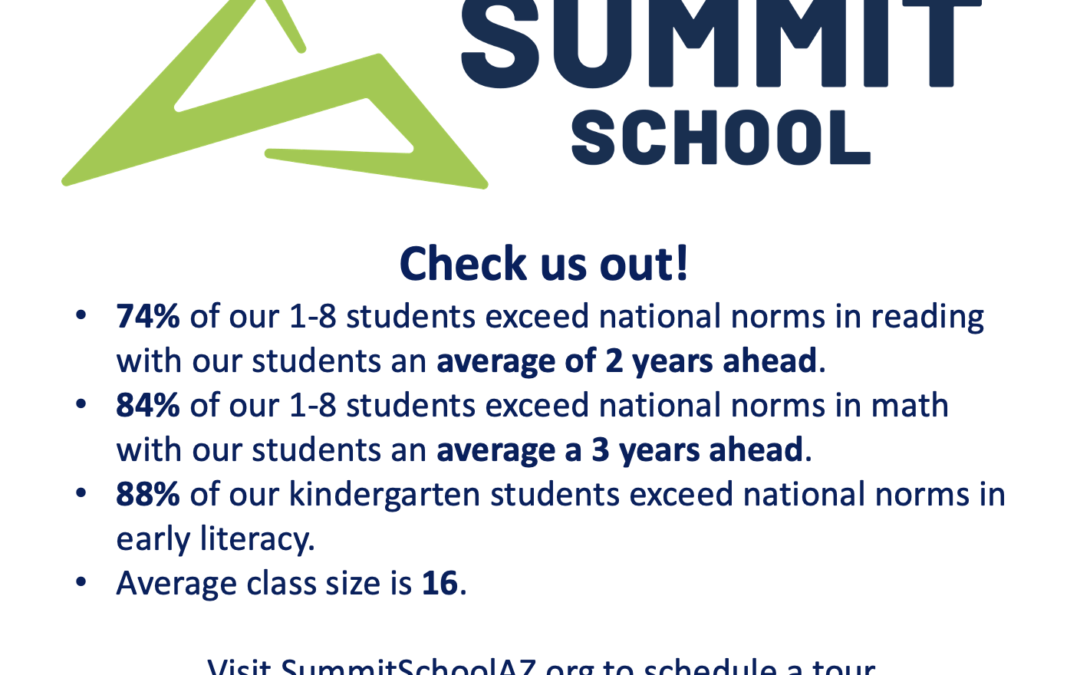Summit School Students in grades K-8 have started a new assessment process this year. The results of our Fountas & Pinnell Reading Assessments and STAR assessments are amazing! Our students are working at an average of 2 years above grade level in reading, and 3 years above grade level in math. We will continue to assess our students at the beginning, middle, and end of the school year and report our results to our community. This link will take you to our current data, and below you will find the answers to some frequently asked questions.
What is the Fountas & Pinnell Reading Assessment? Why is there no fall data for kindergarten or grade 5? Fountas & Pinnell is a teacher administered assessment of reading decoding and comprehension that is not new to Summit School. It helps teachers to determine a student’s instructional reading level and reading comprehension goals. This assessment is given at the beginning, middle, and end of the school year. There is no kindergarten fall data as this assessment is not typically administered until January in kindergarten. There is no fifth grade fall data as the records of this year’s assessment were unavailable. Fifth grade fall data will be included in future school years.
What is STAR? STAR is a nationally normed standardized assessment for students in grades K-8. At Summit School, we will be giving this assessment to our students at the beginning, middle, and end of the school year. Students in kindergarten will take the early literacy assessment. Students in grades 1-8 will take both reading and math assessments. The results of these assessments will be used to help teachers make decisions about instruction, intervention, and enrichment for our students.
What does the shaded row on the data report refer to? The shaded row of information on the data report refers to the expected or average range for a student at the grade level tested. For Fountas & Pinnell this is referred to as “meets expectations.” For the STAR assessment, these students would be in the middle or roughly 50th percentile of national scores. The range on STAR is recorded at 40-60% to account for standard deviations. As you can see from our data, the majority of our students exceed or are in the top percentages in the nation.
What does Average GE mean? Average GE stands for average grade equivalent. This is the average grade level equivalent that our students are performing at on this assessment. Your specific child’s GE will be shown on the parent letter you receive. For example, our first grade students are performing at an average grade level of third grade in the third month in reading.
What does Average Yrs Ahead mean? This number shows the average number of grade level years our students are ahead of the national average. This number is derived from the GE above.
Why is the 82% in grade 3 reading highlighted? This number is highlighted to point out a drop in percentage. This score shows that the number of students who exceeded reading expectations in January dropped from the number who exceeded expectations in the fall. This drop signals a need for scaffolding our higher level students at that grade level. A plan will be put into place and these levels will be carefully monitored to ensure that every student successfully makes a year’s worth of progress.
What will Summit School do with this information? Regular data collection is necessary to help Summit make informed decisions about instruction, intervention, enrichment, and overall programming. The data collected will be reported out to parents and the Summit Community on a regular basis.

